Estimated reading time: 4 minutes
Fruit tree damage can be caused by many things. This week we’re focusing on identifying the damage caused by big pests.
Related Articles
Why you should pick up fruit from the ground
Picking up your fruit from the ground is the first principle of organic orchard hygiene, and one of your best lines of defence against pests.
Netting fruit trees made simple for backyard growers
The sooner you net your fruit trees, the sooner you’ll get reliable crops. We explain the different systems to help you choose the right one.
Mending broken branches in fruit trees
Broken branches are a common occurrence in fruit trees, caused by too much fruit or clumsy animals, but they can often be repaired.
Kangaroos, wallabies, deer, rabbits, and hares spring to mind. You might have other big pests in your area like wombats, feral goats, or possums.
Whatever the animal you’re dealing with, they often inflict their worst damage in winter when the trees are dormant, especially on newly planted trees.
Hares and rabbits, in particular, seem to absolutely love the fresh green bark of very young trees. They’re more likely to leave older trees alone once the bark has toughened up.
This photo above shows what hare damage on a cherry tree looks like, and the one below shows a close-up view (pretty gruesome, isn’t it?)
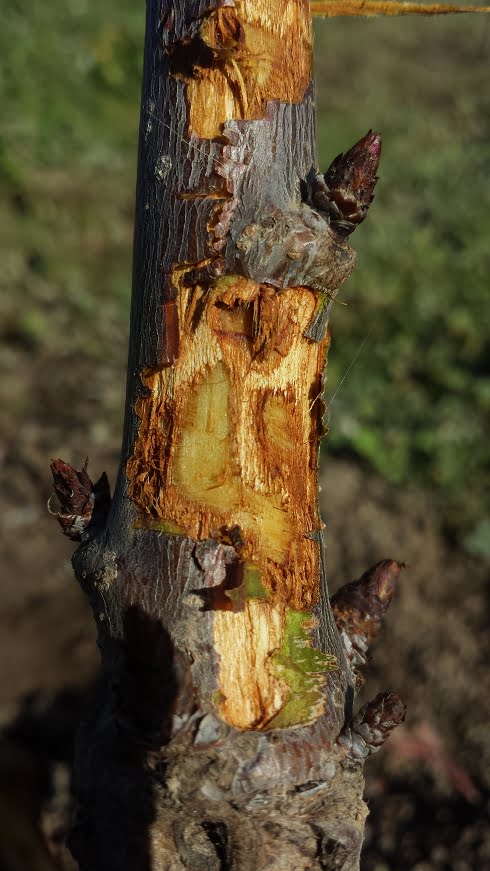
Figuring out what damaged your fruit tree
The key to effective pest and disease management is to figure out how to protect your trees or fruit from the pest.
This may sound completely obvious.
In fact, it’s quite the opposite of the more conventional approach of trying to get rid of the pest altogether (often with chemicals).
On the whole, the conventional approach doesn’t work. We’re not huge fans of aiming for eradication. It’s expensive, time-consuming, and frustrating, and it rarely solves the problem.
Plus, every animal and insect has its place in the ecosystem—even if you don’t want them near your fruit trees!
The first step in our strategy is to monitor the trees. That way you’ll actually notice if something is causing damage.
The next step is to diagnose your trees and figure out what’s doing the damage.
Looking for the signs
Kangaroos tend to nibble the top of young trees. They seem to find apical [tip] buds especially delicious. They really love apple trees.
However, much of the damage caused by kangaroos or wallabies seems more incidental than purposeful. It often happens by accident as they clumsily jump past the trees. It results in this type of damage:
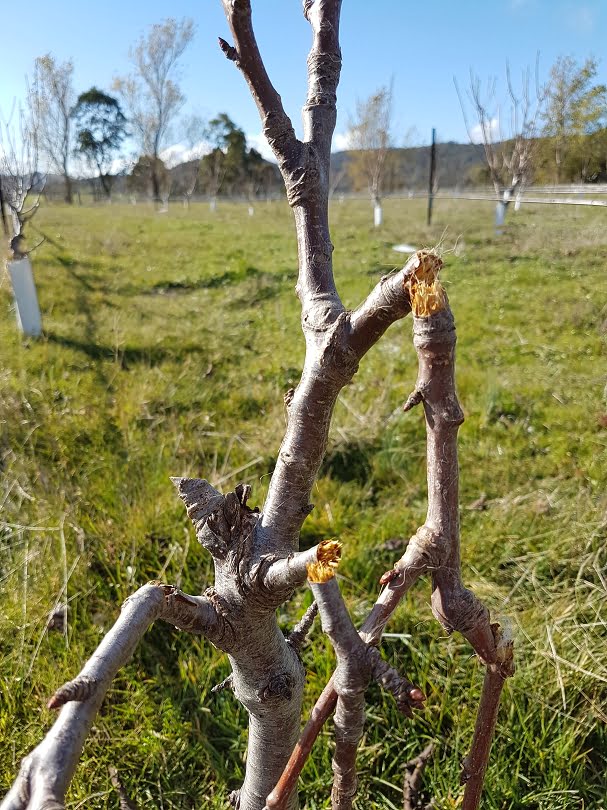
Another clue to identify the culprit animal that’s doing the damage is to look carefully on the ground for scats (or poo, as most of us call it).

To help you figure out which animal might be responsible for eating your fruit trees, here are some photos of other types of animal scats (thanks to ABC Science and The Wildlife Trusts for these photos):
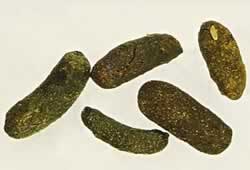

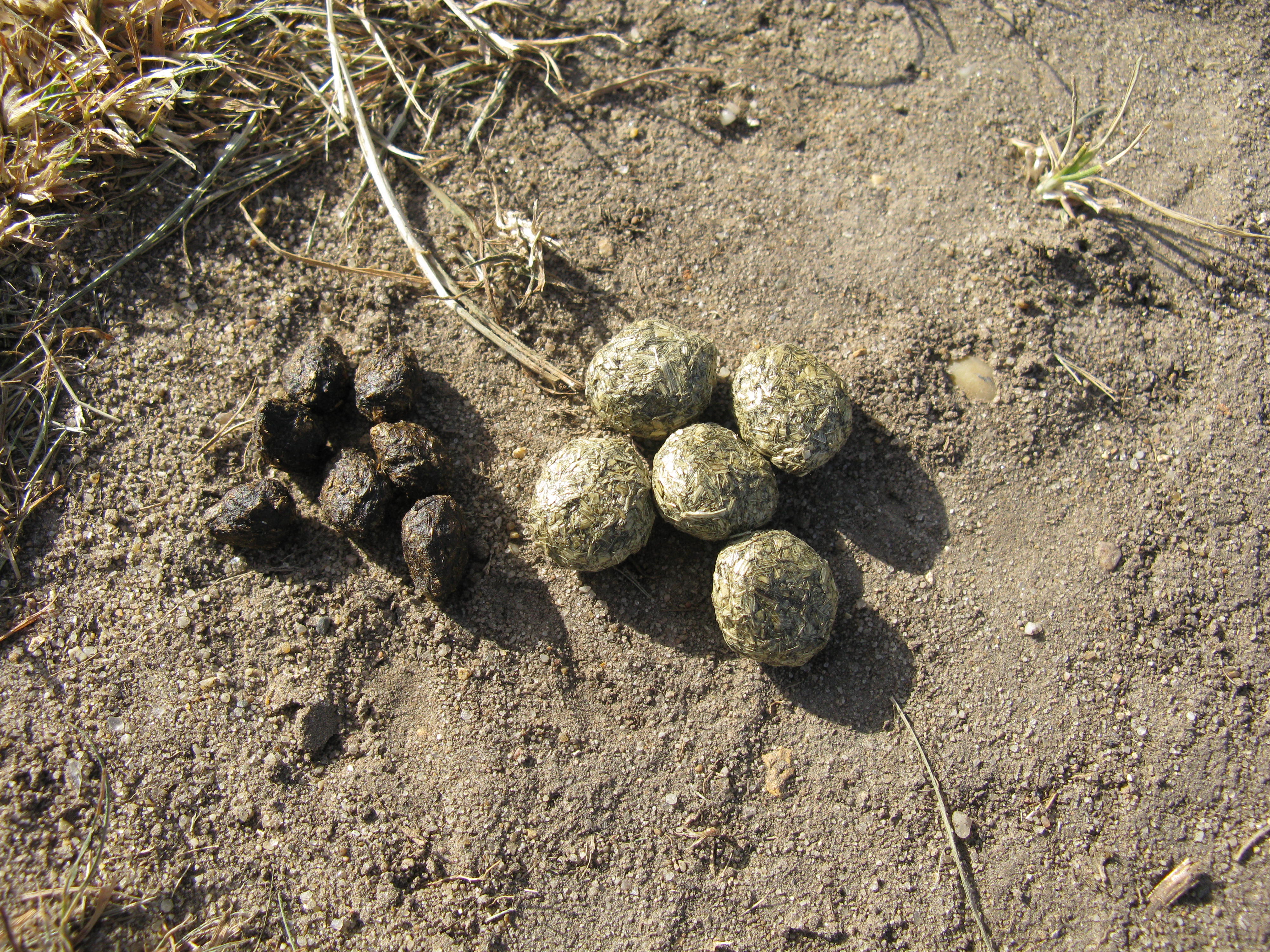
Droppings are left in clusters of little, round, hard balls. They are usually yellowy-brown or green in colour, and full of grass. Hare droppings (on the right) tend to be slightly bigger and flatter than rabbit droppings (left hand side).
©Darren Tansley
Next steps after identifying the culprit
Identifying the animal that’s damaged your fruit tree will inform your next step. Deciding what type of structure to put in place to protect the trees depends on the animal you’re trying to keep out.
Ideally, you will have already provided adequate tree guards before you plant the trees—but you probably haven’t!
Most of us are better at responding to things once they’ve happened, rather than taking action to prevent things that might not even happen.
That’s fine, as long as you do respond quickly once you see the damage. Once an animal has discovered where your tasty trees are, be warned—they’ll be back!
Related Articles
Why you should pick up fruit from the ground
Picking up your fruit from the ground is the first principle of organic orchard hygiene, and one of your best lines of defence against pests.
Netting fruit trees made simple for backyard growers
The sooner you net your fruit trees, the sooner you’ll get reliable crops. We explain the different systems to help you choose the right one.
Mending broken branches in fruit trees
Broken branches are a common occurrence in fruit trees, caused by too much fruit or clumsy animals, but they can often be repaired.


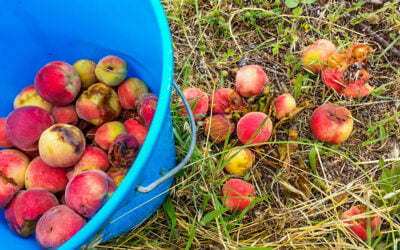

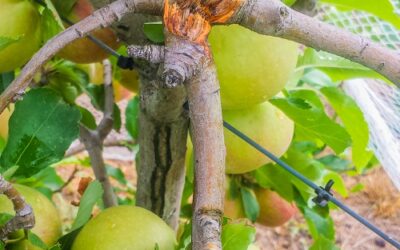


What damage do foxes cause to fruit trees?
Are wombats a problem for fruit trees?
Hey Marg, foxes (like dogs) may eat some fruit from your trees but are unlikely to do any damage to the tree itself. Wombats eat grass not trees, and though they may do some damage to your infrastructure (like fences) if it’s in the way of where the wombat wants to go, they don’t damage the trees themselves.